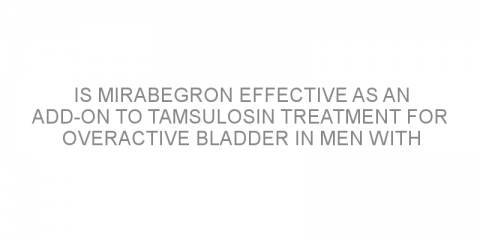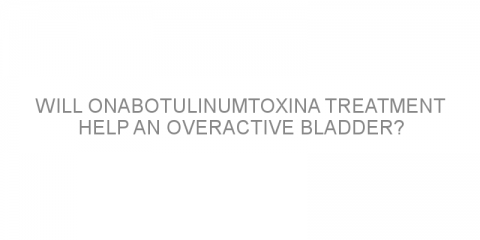In a nutshell This paper investigated the effectiveness and safety of mirabegron (Myrbetriq) as an add-on treatment to tamsulosin (Flomax) for the treatment of overactive bladder (OAB) in men with lower urinary tract symptoms (LUTS). This study found that mirabegron appeared to be effective for the treatment of OAB symptoms in those treated with...
Read MoreAdditional medical conditions-Overactive bladder Posts on Medivizor
Looking for participants with benign prostatic hyperplasia and overactive bladder to test a new drug
In a nutshell This phase 3 trial is examining the effectiveness of vibegron in the treatment of overactive bladder symptoms (OAB) in patients with prostatic hyperplasia (BPH; enlarged prostatic gland). The main outcome of this trial will be a change in urgency episodes. This trial is being conducted in the US and Canada. The details A benign (not...
Read MoreEffective drug combinations for the treatment of overactive bladder in patients with benign prostatic hyperplasia
In a nutshell This study investigated drug combinations with silodosin (Rapaflo) to treat overactive bladder (OAB) in men with benign prostatic hyperplasia (BPH). They found that fesoterodine (Toviaz) was more effective than mirabegron (Mirbetriq) as add-ons to silodosin in these patients. Some background Benign...
Read MoreComparing mirabegron with tolterodine and placebo
In a nutshell This study reviewed the results of 8 studies that compared mirabegron (Betmiga) with placebo (a control drug with no active effect) and tolterodine (Detrol) to treat an overactive bladder (OAB). The study found that mirabegron was a safe and effective treatment option for OAB. Some background OAB refers to a collection of symptoms...
Read MoreWill onabotulinumtoxinA treatment help an overactive bladder?
In a nutshell This study looked at the use of onabotulinumtoxinA (better known as Botox) to treat an overactive bladder. The study found improvements in bladder symptoms from treatment with onabotulinumtoxinA. Some background Overactive bladder (the need to go to the toilet too often) is often treated with anticholinergics (drugs that block the...
Read MoreCombination therapy beneficial for men with BPH with overactive bladder symptoms
In a nutshell This study examined the benefit of combining silodosin (Rapaflo) with propiverine (Mictonorm) in reducing urinary symptoms due to benign prostatic hyperplasia (BPH). Authors reported greater overall improvements when both therapies were combined. Some background Men with BPH often experience urinary symptoms that can...
Read MoreBotox injections are effective for overactive bladders symptoms after vaginal sling procedure
In a nutshell This study evaluated OnabotA (onabotulinumtoxinA, botulinum toxin A, or Botox) in the treatment of overactive bladder (OAB) symptoms after a vaginal sling procedure. Researchers reported similar effectiveness of OnabotA in treating OAB symptoms with or without a previous vaginal sling procedure. Some background Vaginal sling...
Read MoreOveractive bladder: Alternative treatment options examined
In a nutshell This study evaluated recent evidence on different treatment options available for overactive bladder symptoms. Authors concluded that a number of alternative treatments are as effective as the current standard-of-care anti-muscarinic drugs. Some background Bladder muscle over-activity is a common cause of urinary urgency and...
Read MoreBotox for overactive bladders: Predictors of treatment success
In a nutshell This study investigated whether certain patient characteristics affect treatment success with OnabotA (onabotulinumtoxin-A, botulinum toxin A, or Botox) for overactive bladders. The researchers concluded that gender and symptom severity were reliable predictors of treatment success. Some background Bladder muscle over-activity is...
Read MoreAcupuncture: An alternative treatment for overactive bladders?
In a nutshell This study reviewed evidence on acupuncture as an alternative treatment option for overactive bladders. The authors concluded that early findings on acupuncture treatment are promising, but additional high-quality evidence is needed. Some background An overactive bladder is a common cause of urinary incontinence. First-line drug...
Read More










